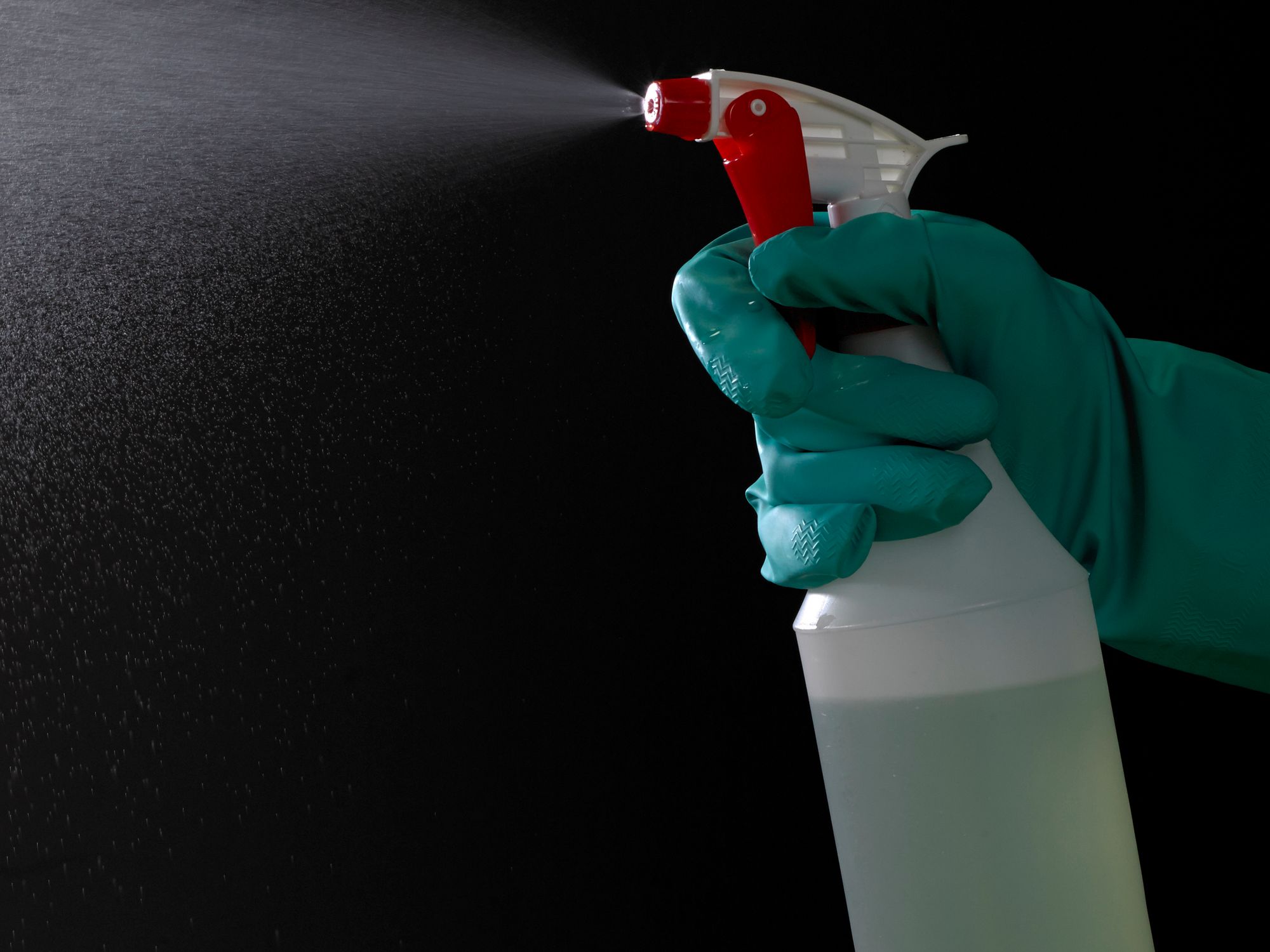Tools for cleanup

- Only certain disinfectants, plus diluted bleach solutions, are acceptable to OSHA for use on bloodborne-pathogen-contaminated surfaces.
- Commercial spill kits aren’t required by the regulation, but necessary cleanup equipment can be easily acquired and stored.
Bloodborne pathogens require more stringent cleanup measures than regular messes. Using disinfectants accepted by the Occupational Safety and Health Administration (OSHA), along with effective equipment as specified in 1910.1030, allows for effective and compliant cleaning and disinfecting.
Acceptable disinfectants
Only certain disinfectants kill bloodborne pathogens. OSHA accepts four types of substances as appropriate disinfectants to clean contaminated surfaces:
- Household bleach (5.25 percent sodium hypochlorite) diluted between 1:10 and 1:100 with water (see the April 30, 1993, OSHA letter of interpretation),
- EPA-registered tuberculocidal disinfectants,
- EPA-registered disinfectants labeled as effective against both human immunodeficiency virus (HIV) and hepatitis B virus (HBV), and
- Sterilants/high-level disinfectants cleared by the Food and Drug Administration (FDA).
OSHA allows the use of the above products unless the surfaces are contaminated with agents, volumes, or concentrations for which higher-level disinfection is recommended.
See the lists of selected EPA-registered disinfectants.
Following the instructions on the labels of disinfectant products is crucial. EPA-registered product instructions, for example, require that:
- The worker performing the task be given personal protective equipment (PPE);
- All the blood be cleaned up thoroughly before application of the disinfectant;
- The disposal of the infectious waste be in accordance with federal, state, or local regulations; and
- The surface be left wet with the disinfectant for 30 seconds for HIV-1 and for 10 minutes for HBV.
Employees must follow the label instructions regarding the amount of disinfectant and the length of time it must remain wet on the surface. Training must include proper disinfectant use for employees whose job duties involve cleanup following a bloodborne-pathogen-related incident.
While bleach may cause damage to some medical instruments and therefore cannot be used in all cases, fresh solutions of diluted household bleach may be appropriate for disinfection of environmental surfaces and for decontamination of sites after blood or other potentially infectious materials (OPIM) have been wiped up. Contact time for bleach is generally considered to be the time it takes to air dry. Solutions of bleach should not be stored in glass containers, but in material such as the plastic the bleach comes packaged in.
Spill kits
Section 1910.1030 doesn’t specifically require a spill kit. Instead, the regulation calls for certain personal protective equipment (PPE), waste containers, biohazard labels, and proper decontamination of surfaces. The necessary equipment could be assembled in something like a pail, bin, or duffle bag.
A commercial bloodborne pathogens spill kit can also be purchased. A typical kit might have any combination of gloves, paper apron or gown, face shield, goggles, mask, shoe covers, absorbent powder, a small scoop, red or labeled plastic bags, toweling, absorbent pads, disinfectant spray, and towelettes. A sharps container will probably not be offered in a commercial kit.
